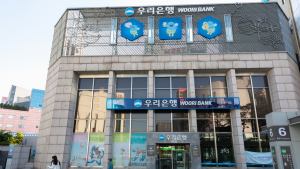The first one is notable for its excellent financial discipline and careful handling of operational expenditures. The firm retains profitability through steady OpEx and significant cash flow from operations. It also secures financial flexibility with sizeable cash reserves and undrawn credit lines.
Moreover, with the help of strict cost controls, product mix optimization and clever pricing, the second one has significantly increased its profitability and margins. The company has operational strength and long-term profitability prospects. These elements highlight its ability to maintain margin gains and create continuous cash flow. Finally, the third one shows tenacity in its financial results despite a challenging environment for interest rates. The bank may hit solid long-term growth through its capacity to manage interest rate risks and its variety of noninterest income sources.
Golden Ocean (GOGL)

Throughout Q1 2024, Golden Ocean (NASDAQ:GOGL) successfully controlled its operational costs. Total operating expenditures decreased from $63.4 million in Q4 2023 to $62.6 million in Q1 2024. OpEx per ship per day, excluding drydock costs, stayed at $6,700. Further, Golden Ocean exhibits operational efficiency by controlling drydock costs and keeping OpEx levels constant.
The business also demonstrated sound financial management and successful derivatives performance, with a net financial cost of $27.2 million. On the other hand, there was a $7.3 million gain on derivatives and other financial income. This implies the business is skilled at protecting its financial lead by hedging against market volatility.
Moreover, Golden Ocean kept its financial flexibility and handled its cash flow well, with $115.8 million in cash flow from operations. Its cash flow was sharply used for finance and investment purposes. The company kept $125 million in credit lines undrawn and $147.4 million in cash.
Overall, the company can maintain operations and seek development prospects. This is reflected in its robust cash flow from operations and careful use of money for financing activities and investments. Therefore, the sizable cash reserves and undrawn credit lines further boost financial flexibility.
Seagate (STX)

In Q3 2024, Seagate (NASDAQ:STX) saw a notable increase in margin, with non-GAAP gross profit rising by 18% and non-GAAP gross margin reaching 26.1%. Strong execution, a superior product mix, and price modifications were the main drivers of this increase.
Furthermore, the firm’s non-GAAP operating margin increased to 11% of revenue, a rise of approximately 3% in a single quarter. Moreover, improved profitability due to Seagate’s emphasis on price initiatives, product mix optimization, and expenditure reductions shows effective operations and cost control. Thus, the efficacy of the company’s pricing strategy and the quality of its product portfolio are reflected in its ability to increase gross margins.
Finally, Seagate generated excellent cash flow, carefully deployed capital, and maintained good financial discipline. During the March quarter, the firm produced $128 million in free cash flow and ended the quarter with $2.3 billion in available liquidity. Seagate’s financial situation is further strengthened by the news that Broadcom (NASDAQ:AVGO) will purchase its Application Specific Integrated Circuit assets for $600 million.
Overall, Seagate constantly derives cash flow through its strength in operations and capacity to turn sales into cash fast.
Woori Financial (WF)

With Woori Financial‘s (NYSE:WF) non-performing loan (NPL) ratio of only 0.35%, the percentage of NPLs against total loans was decisively low. Moreover, the high NPL coverage ratio reflects Woori Financial’s fundamental capacity to offset any losses from NPLs. Woori Financial updated its capital management and shareholder return policies in 2023 to improve predictability and boost shareholder returns. Thus, the company has two new strategies. First, a target for the CET1 ratio should be set, and the total shareholder return (TSR) should be progressively boosted to 35% or higher (once the CET1 ratio hits over 13%).
During 2023, Woori Financial had disbursed 311 trillion South Korean won (KRW) in loans, a 5.1% year-over-year (YoY) boost from 2022. Large corporate loans and excellent SME loans contributed to an 8% YoY boost in corporate loans to 170 trillion KRW. Large corporate loans, in particular, saw strong growth. Real-demand mortgage loans were the main driver of retail loan growth, up 1.9% YoY likewise uplifted this to KRW 136 trillion. Therefore, this notable loan increase and exceptionally high-quality corporate loans support the group’s revenue growth while solidifying the company’s lead in the market.
On the date of publication, Yiannis Zourmpanos did not hold (either directly or indirectly) any positions in the securities mentioned in this article. The opinions expressed in this article are those of the writer, subject to the InvestorPlace.com Publishing Guidelines.
Yiannis Zourmpanos is the founder of Yiazou Capital Research, a stock-market research platform designed to elevate the due diligence process through in-depth business analysis.
